Big trees dominate much of the British countryside in parks and country estates, but can you identify them? As part of our series on identifying trees, Lia Leendertz identifies the key characteristics of some of Britain's most stately trees. Here are three types; sweet chestnut, walnut and London plane.
Castanea sativa – Sweet chestnut
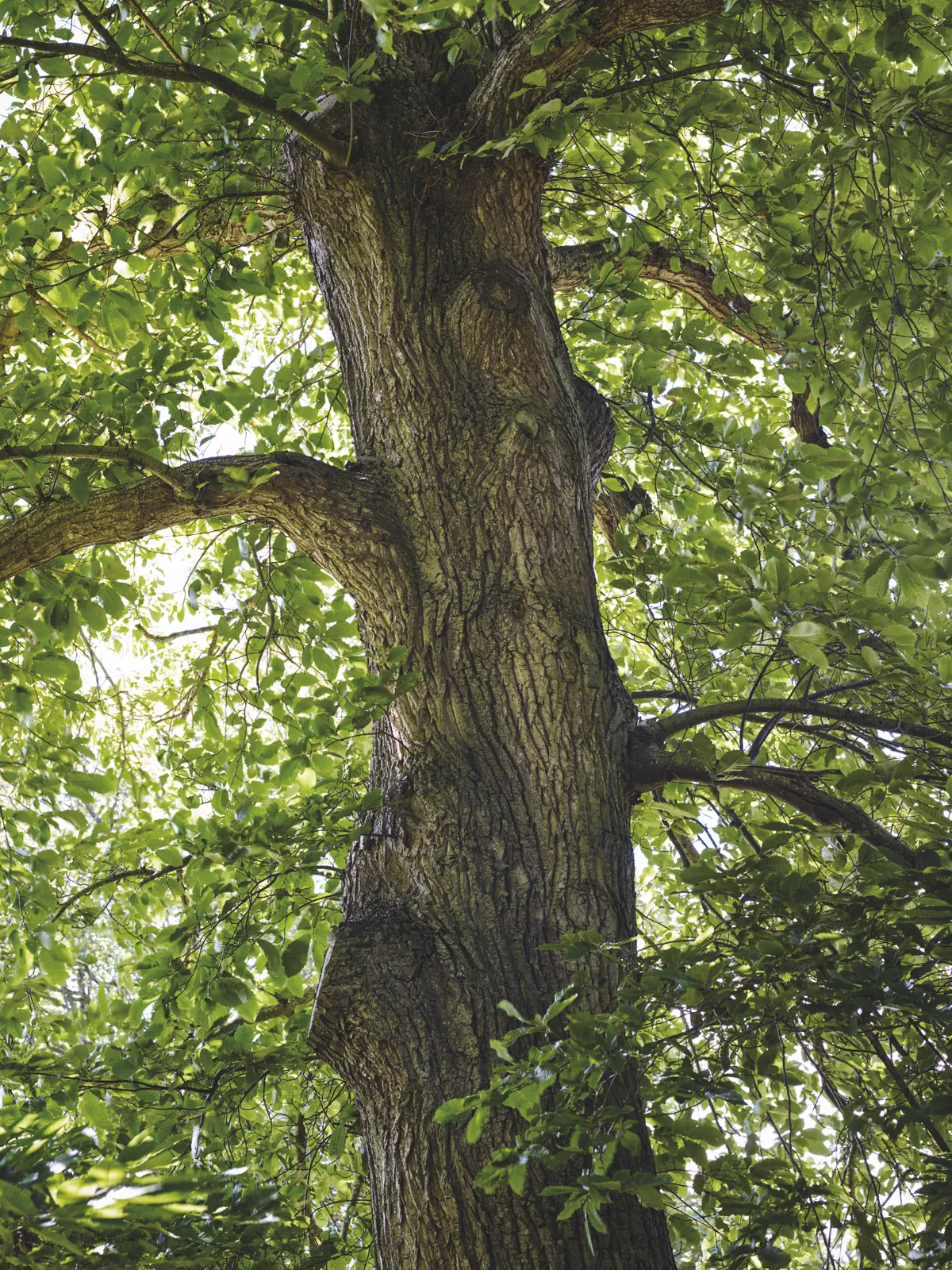
Sweet chestnuts feel like native trees, but this is perhaps because they have been in the UK for so long. In fact they are native to southern Europe and Asia Minor, but were brought here by the Romans, who planted them across the empire. Sweet chestnut is loved for its edible nuts, collected as they fall in autumn and delicious roasted. In parts of the Mediterranean such as Corsica where it is mountainous and impossible to grow wheat, sweet chestnuts are grown in vast numbers and the nuts ground down to make flour, which has become a staple in the local diet. In the UK the tree is found in woodlands and parkland, and is particularly common in the southeast of England, where it was once grown in large numbers and coppiced for poles and for charcoal production. Sweet chestnuts can live for up to 700 years.
- Bark
The young bark is greyish-purple and scored with vertical cracks. As the tree ages, these develop into fissures that appear to spiral around the trunk.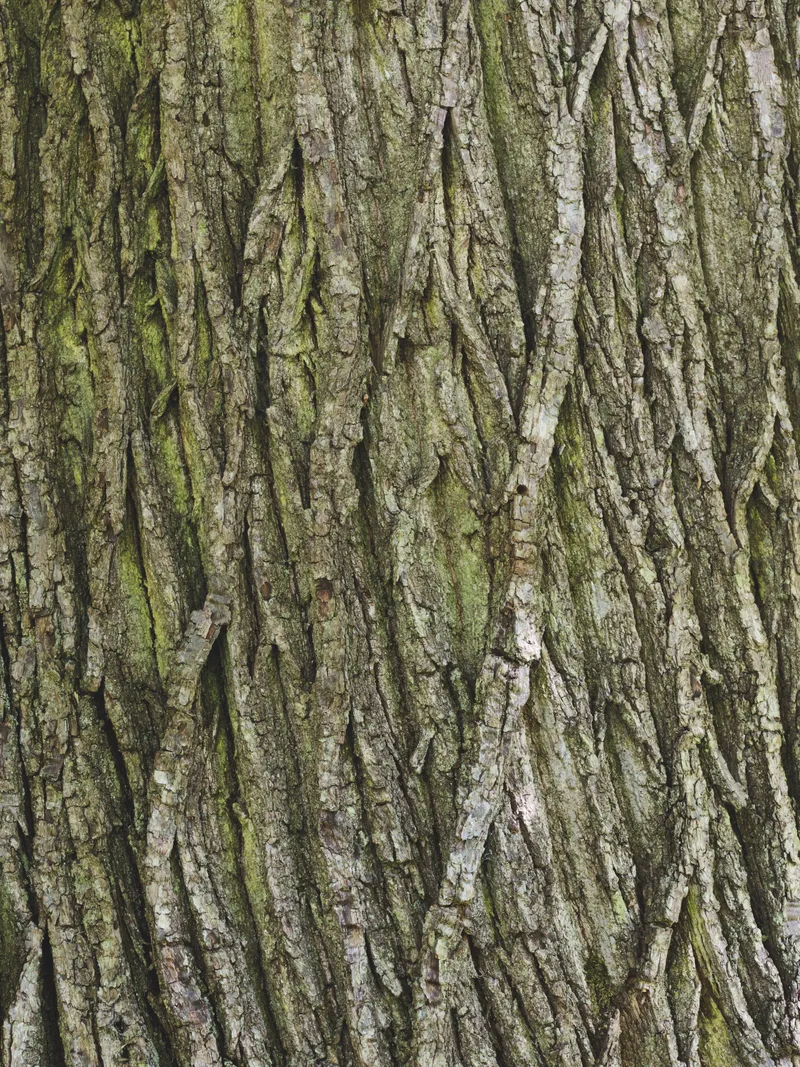
- Leaves
The leaves are long (up to 20cm when mature), dark green and serrated. They have a prominent fold at the midrib and veins running parallel to each other.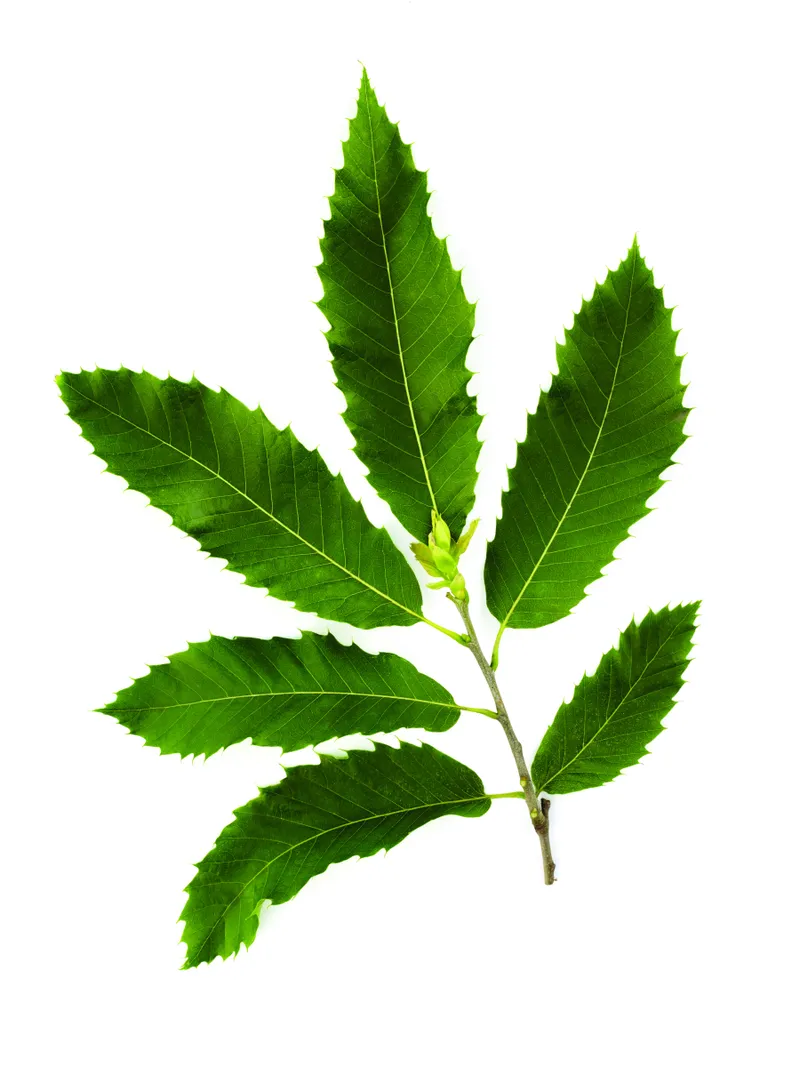
- Nutcases/nuts
Around October, the edible nuts fall to the ground in green cases covered in long, bendy spines. The casings are distinct from those covering the horse chestnut’s conkers, which have short, hard spines.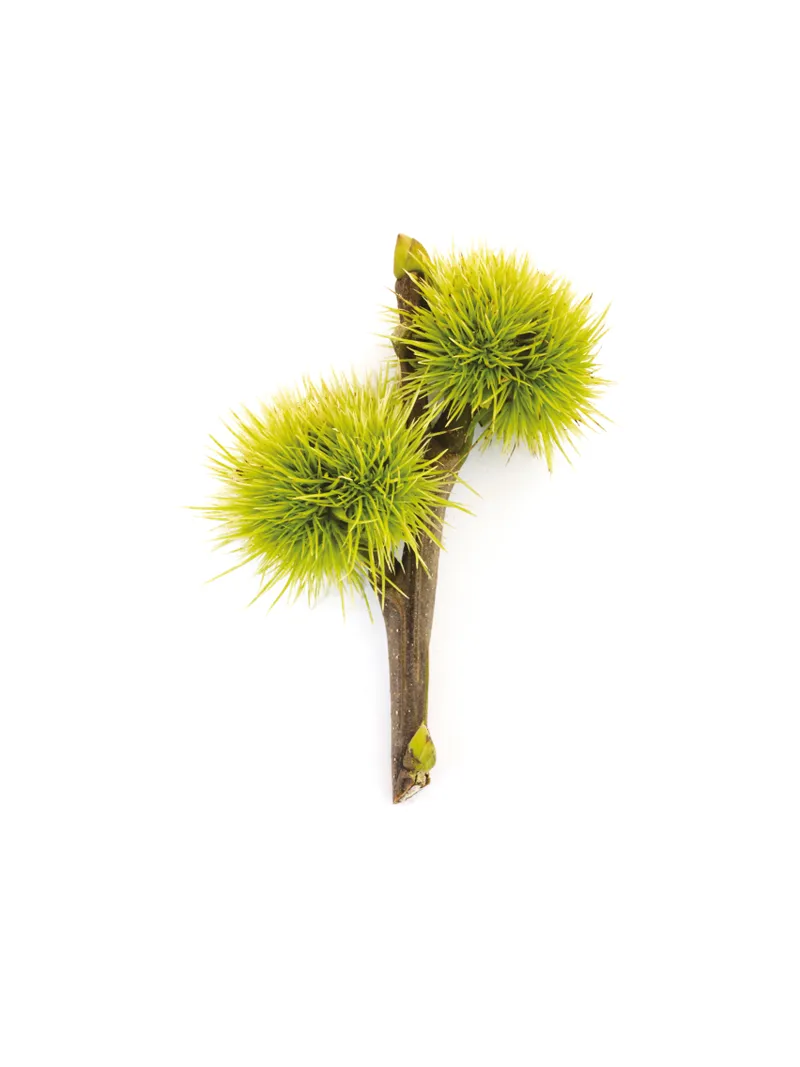
- Flowers/catkins
Sweet chestnut trees produce both male and female flowers. In June or July, long yellow male catkins appear, with green rosette-like female flowers at their base.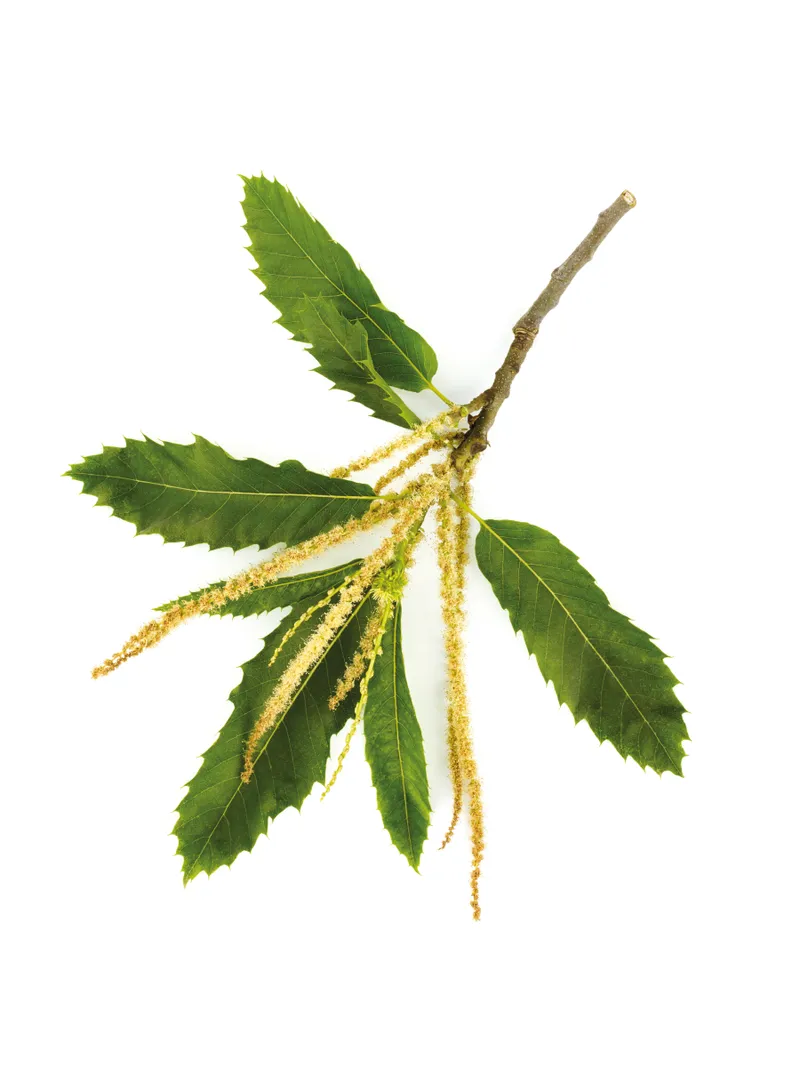
- Silhouette
Sweet chestnuts grow to around 35m in height, and have a broad, rounded crown.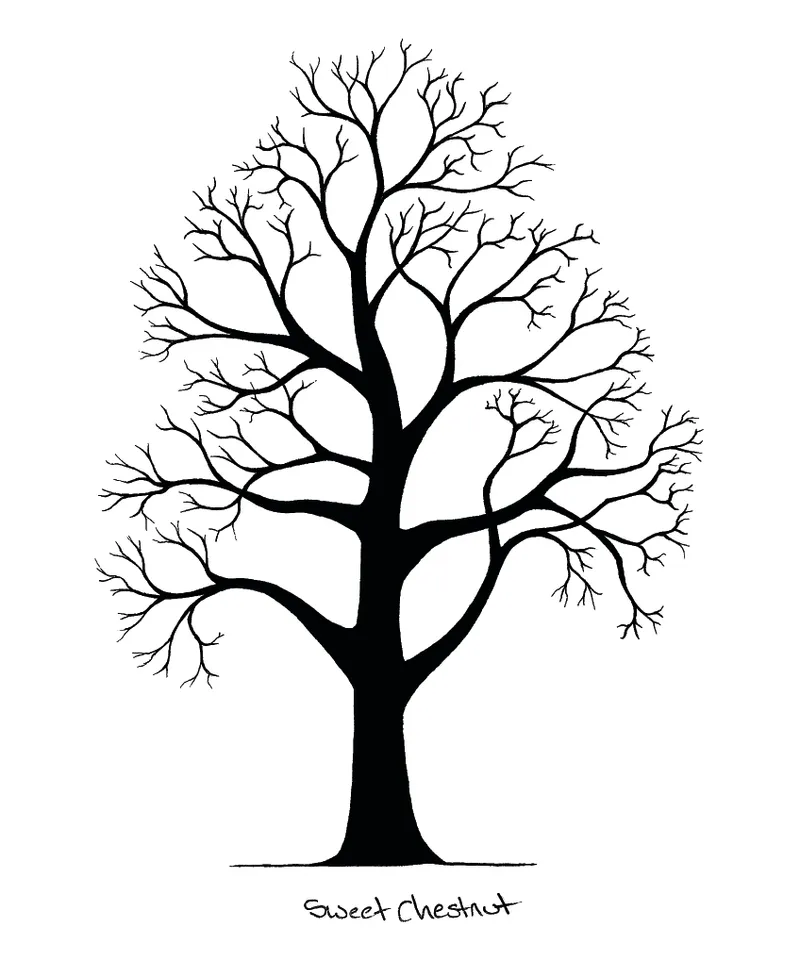
Read more
Juglans regia – Walnut
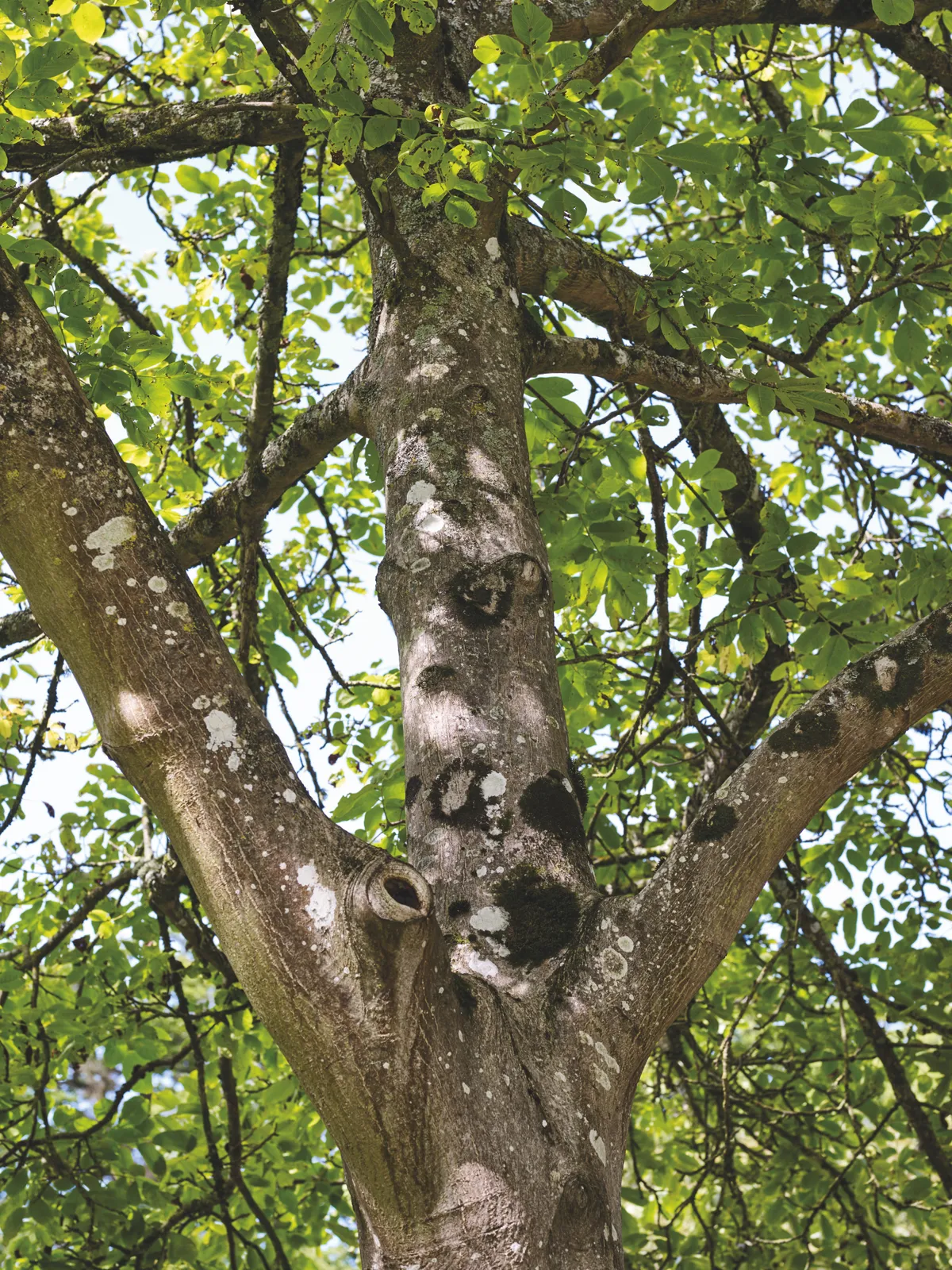
Despite originating in the area from southeast Europe to southwest China, Juglans regia is known as the common walnut in Britain, and the English walnut in the USA. We have no real claim to it other than it having grown here for a very long time. No one is exactly sure how and when it arrived, although it was almost certainly before or during Roman times. It is a broad and handsome tree and bears its big, creamy, bitter nuts well in British conditions, although they have traditionally been picked green and pickled as well as eaten mature. Other plants will not grow beneath walnuts, because their fallen leaves and debris contain juglone, a naturally occurring herbicide. Walnuts grow particularly well in deep, fertile soil and in areas with shorter winters. The wood of the walnut tree is extremely beautiful; with its creamy sap wood, dark heartwood and intricate wavy grain, it is much coveted by woodworkers.
- Bark
Young walnut trees have smooth, greenish-brown bark. As the tree ages, the bark develops fissures and turns a silvery grey colour.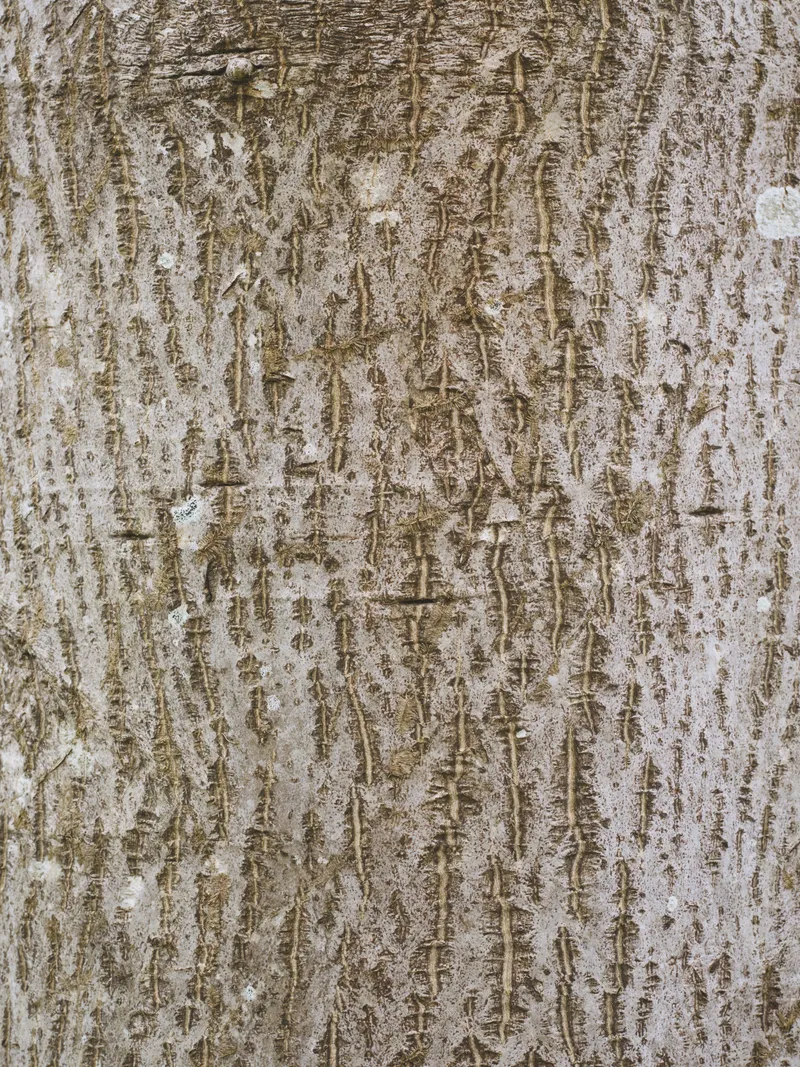
- Leaves
Each leaf has between five and nine leaflets. They are shiny and dark green, and are paired along the leaf stalk, with a single leaf at the end of the stalk.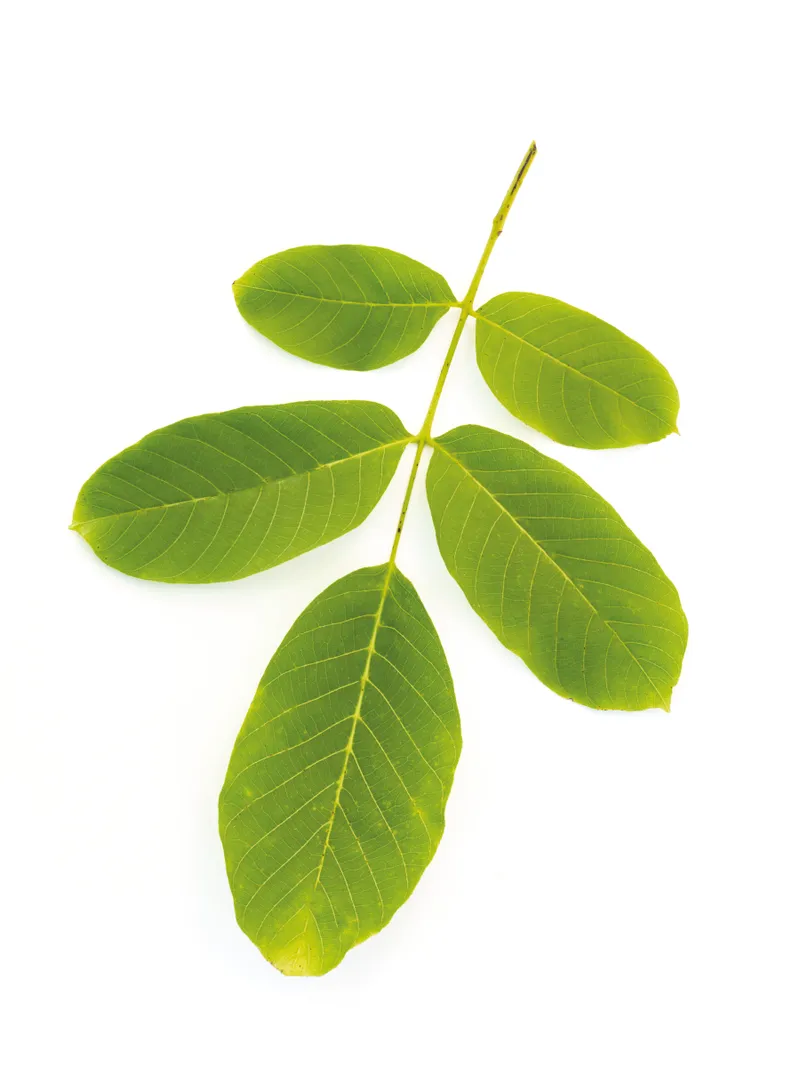
- Nuts
Green walnut cases can be seen on the tree from midsummer, and can be picked as green walnuts for pickling in July. The nuts ripen and turn woody around October.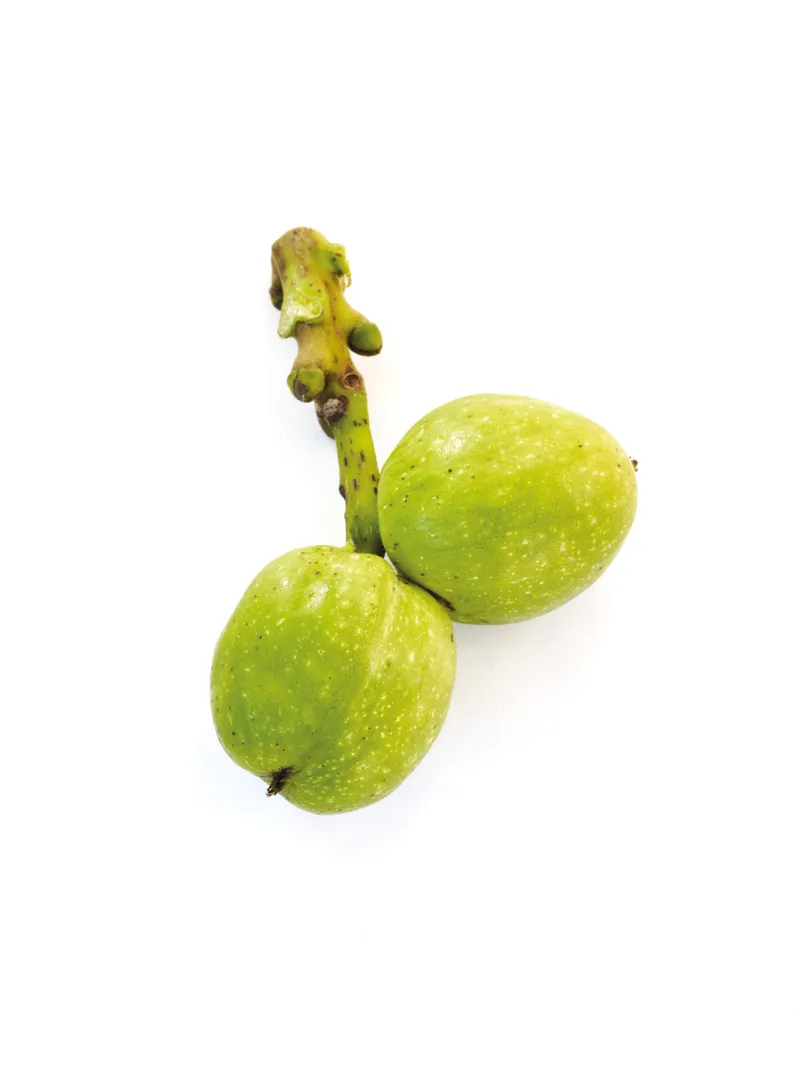
- Winter twig
Twigs have horseshoe-shaped leaf scars where the leaves have fallen. Cut a twig open and it has a spongy pith.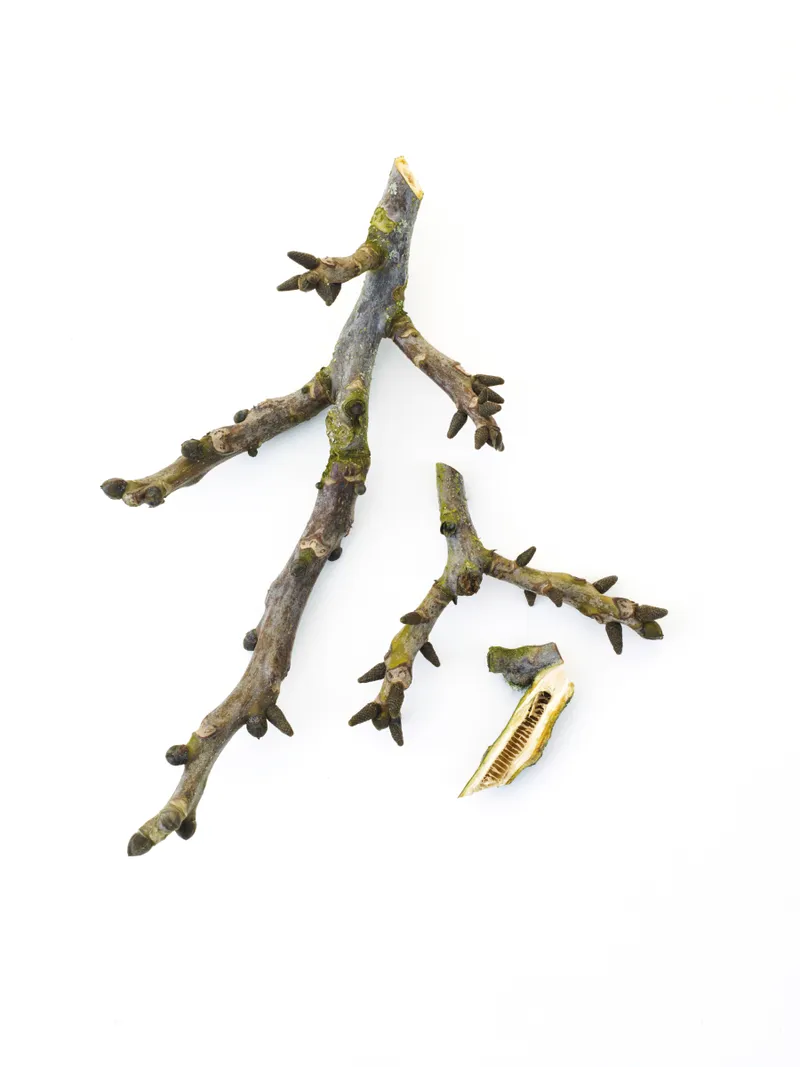
- Silhouette
Walnuts form a short trunk and a broad crown when growing in full sun and can reach around 35m.
Platanus x hispanica – London plane
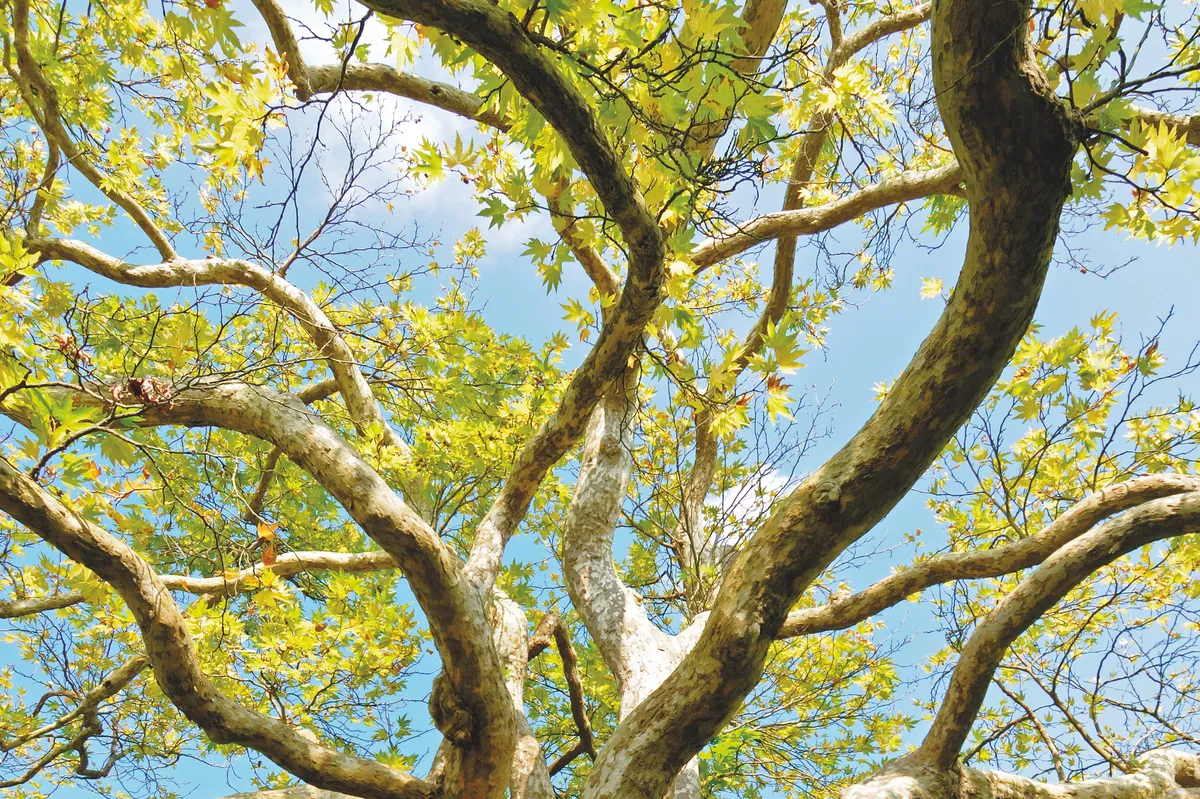
If you live in a city, and particularly in London, the London plane is likely to be the tree you see most often. It is thought to be a hybrid of Platanus orientalis, the oriental plane, and Platanus occidentalis, the American plane, their seedling discovered in Vauxhall by John Tradescant the younger in the mid 17th century. It has been estimated that the London plane accounts for around half of all the trees in London, and this is partly because it is so happy in urban conditions. Its beautiful bark shrugs off plates all year round, and with it any pollution and deposits that have built up; it requires little root space; and it is very malleable and happy to be pruned, as witnessed in European cities where it is also used in great number but often trained as a shade tree or down the centres of avenues. Trees can live to be hundreds of years old. There is a fine specimen at Bishop’s Palace in Ely, planted in the 17th century.
- Bark
The bark has a distinctive camouflage pattern, with plates of brown, grey, mustard yellow and olive green that flake away to reveal new colours as the tree grows.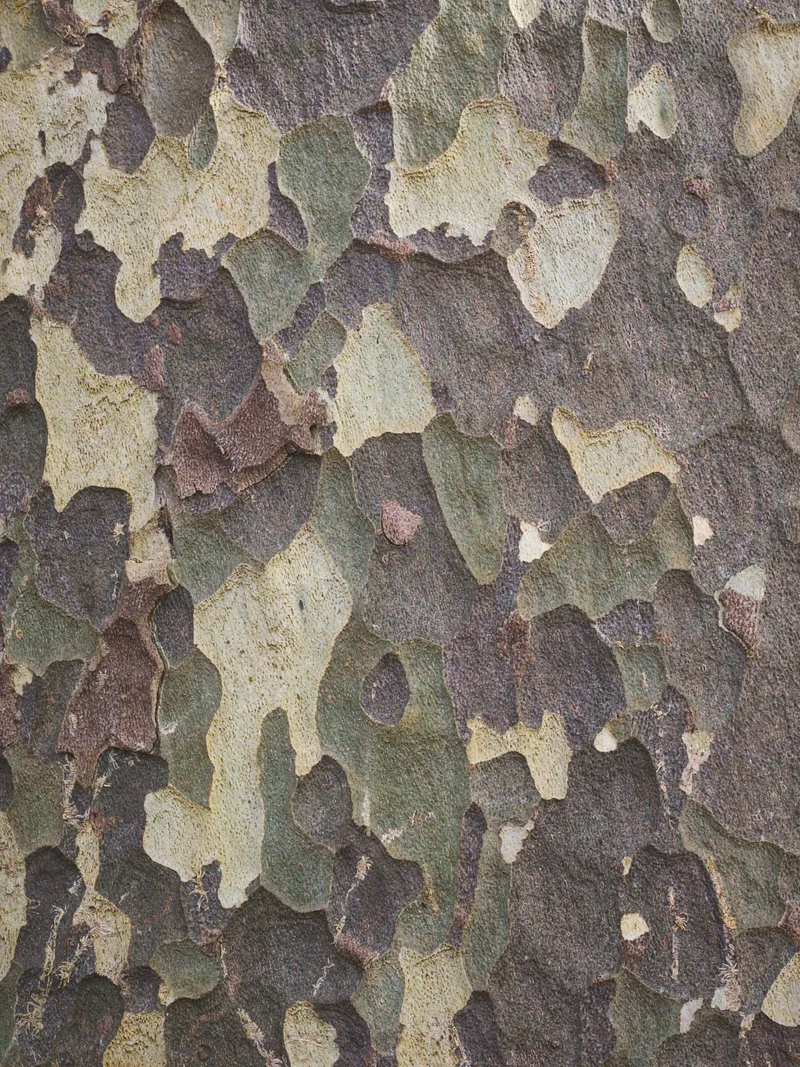
- Leaves
Leaves are simple and maple-like. When they are forming in spring they produce lots of irritating short hairs called trichome fibres (the cause of the infamous ‘Chelsea cough’ at the flower show in May).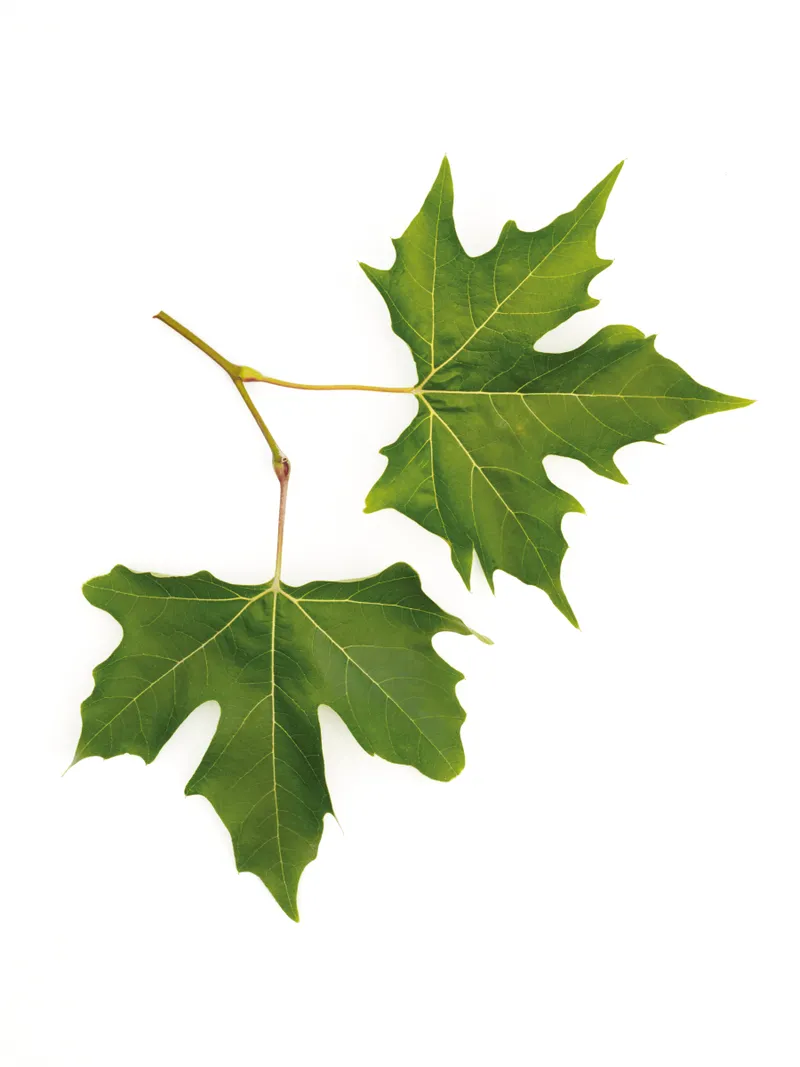
- Bud arrangement
The buds are arranged alternately along the stem. In winter they are smooth, shiny and cone-shaped, and may have a red sheen.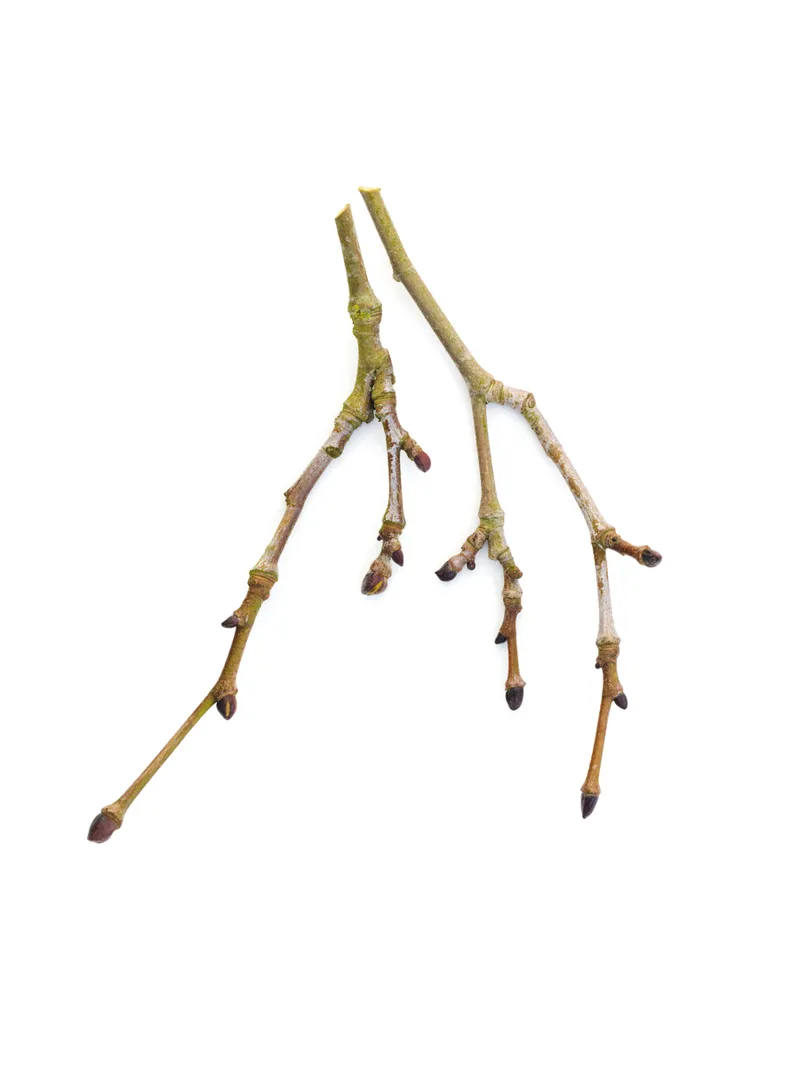
- Seed balls
Perfectly round seed balls hang from the tree in bunches, becoming particularly visible in winter after the leaves drop.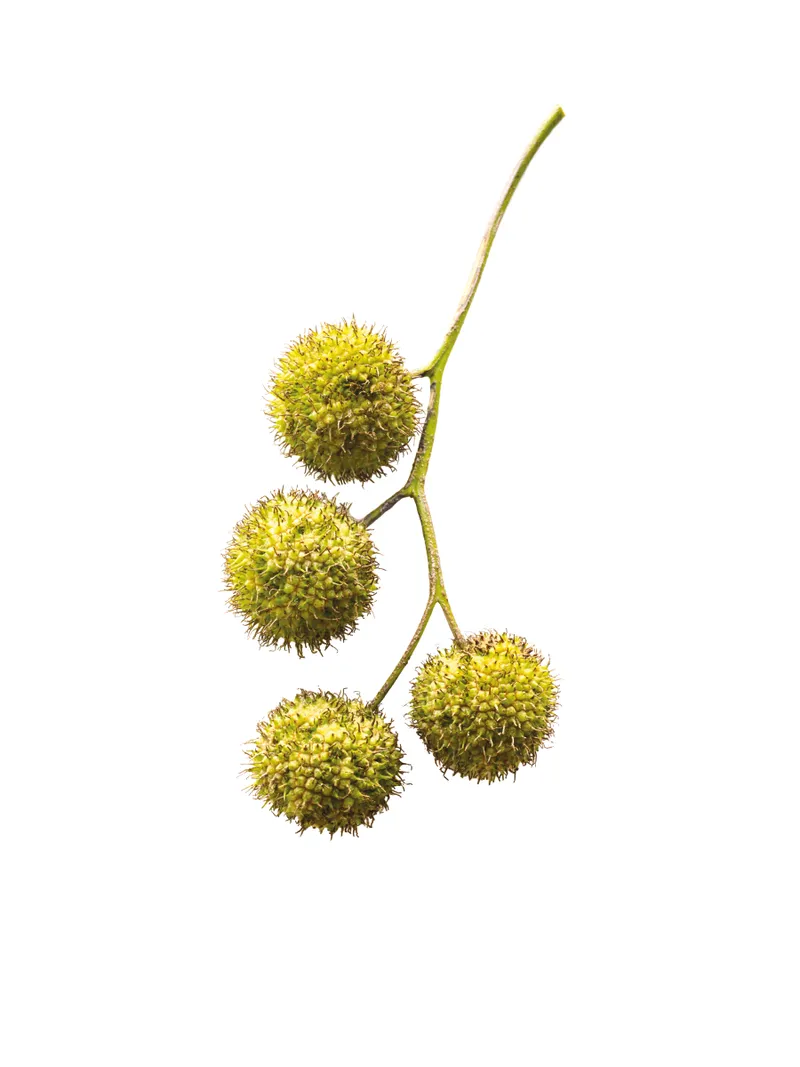
- Silhouette
Tall, with a long, straight trunk and rounded crown. Planes are often pollarded in cities.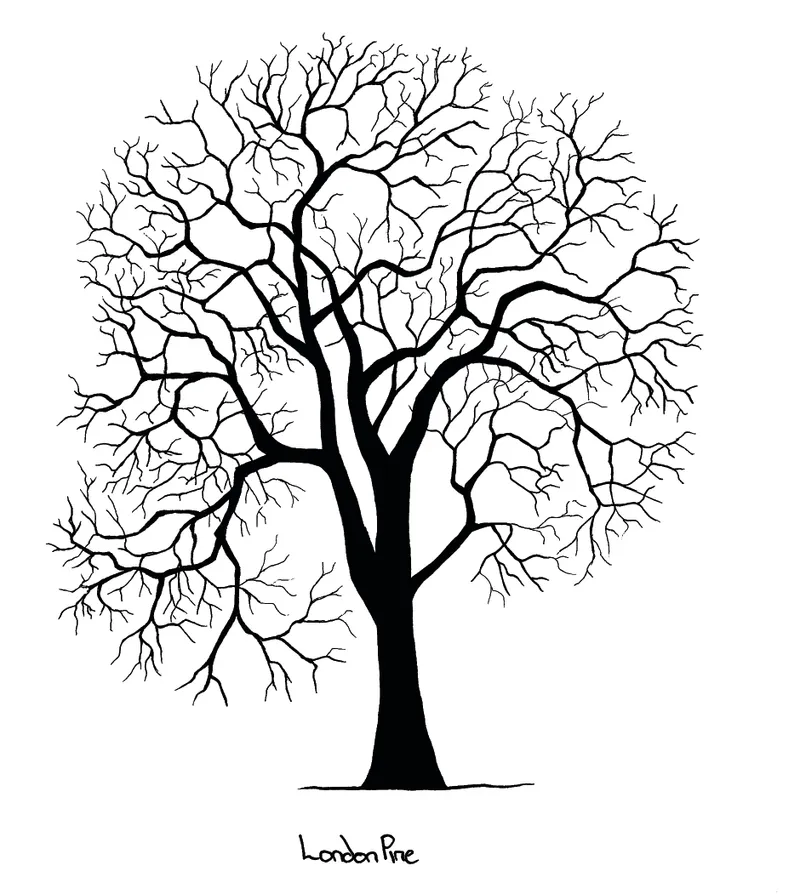
Words Lia Leendertz
Photos Jason Ingram
Illustration Liam McAuley
